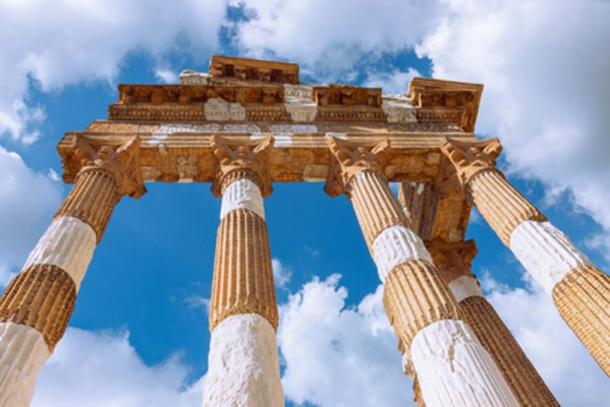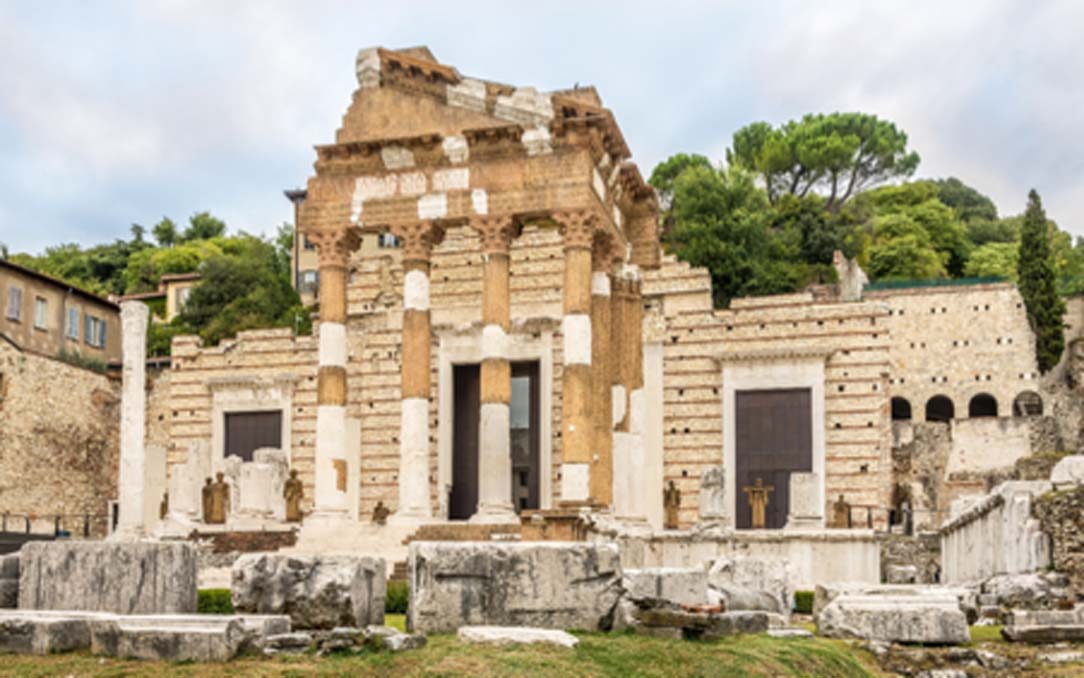Ancient Capitolium Temple in Brescia Pleased the Roman Gods
Because Italy is so rich in archaeological and historical sites, visitors often do not have the time to visit as many as they wish. One site which should not be missed is the remarkable Capitolium of Brescia, one of the best-preserved Roman-era temples in Italy. The Capitolium, along with other sites and remains in Brescia, is part of a UNESCO World Heritage Site.
The History of The Capitolium At Brescia
Brescia, or Brixia in Latin, has been inhabited since at least 1200 BC and it may have been founded by the Etruscans. The city became an ally of Rome and Brixia was recognized as a city by Emperor Augustus, with its inhabitants becoming Roman citizens.
There were a number of earlier temples on the site, but virtually nothing of these remain, nor any indication of which deities they were built to honor. During Augustus’ reign, a sanctuary dedicated to an unknown god graced the site. He refurbished four temples in Brescia and one of these may have stood on the site of the present-day ruins of the Capitolium.

The ruins of the main temple (J. Ossorio Castillo/Adobe Stock)
The Capitolium was built by Emperor Vespasian in approximately 79 AD, but by the late 1 st century AD, the temples were in a poor state of repair. The Capitolium was dedicated to the three chief Roman deities Jupiter, Juno, and Minerva. Similar temples were found in Rome and throughout the Empire.
Brescia was sacked by Attila the Hun and the Capitolium was badly damaged. The city was later occupied by the Byzantines and the Lombards (Longobards) and the temple fell into a further state of disrepair. Later it was almost completely buried by a landslide which preserved it for posterity as it lay buried for centuries until it was excavated in the 1820s. A magnificent bronze statue of the goddess of Victory, or Nike, was also found in the temple.
The Splendors of Capitolium At Brescia
The Capitolium was located near the Roman forum, the main public space in the city and the three main sections, or cellae, of the temple can still be seen. They have been rebuilt and form a partially complete portico. This portico in ancient times was once lined with Corinthian columns and the bases of these still stand, along with a pediment with a dedication to Vespasian.
- The Fairy Tale Village of Alberobello and its Picturesque Trulli Houses
- The Roman Pantheon Had A God for All Seasons - And Then Some
- Durability, Power, and Imposing Public Edifices of Roman Architecture

The remains of the Corinthian columns in Brescia (Artem /Adobe Stock)
Broad marble stairs that have been restored lead up to the temple from a Roman-era road to a podium which has a central arch. The steps also lead up to the podium with a raised vestibule and the remains of the flanking walls. The Capitolium once held statues of the three gods, Juno, Minerva, and Jupiter. A votive chapel, which is still almost intact, can still be seen along with the marble slab flooring, which is very impressive, thanks to restoration. The interior of the temple has been transformed into museum.
The Museum in The Capitolium At Brescia
The temple has been extensively restored and the three sections or cellae have been well maintained and repurposed into exhibition spaces. Entrance to the museum is by the ancient stairway and through the portico.
The central section of the temple now displays broken sculptures and blocks from the original Capitolium. On the walls are fragments of masonry with epigraphy from the original temple, chiefly dedications and memorials to the dead. Another section which has been heavily restored is a space that contains sculpted heads excavated at the temple. Some of the original brick walls can also be seen here. The multimedia room is situated in the third section of the temple. Here visitors can see recreations of the original temple and also Roman and Lombard Brescia.
How To Visit The Capitolium At Brescia
The temple is not far from the modern city of Brescia. Public transport to the site is plentiful and an admittance fee is charge. There are other Roman sites to be seen in the area of the Temple. It is part of the archaeological park known as Longobards in Italy: Places of Power (568–774 AD) which is a group of notable buildings constructed by the German tribe.
Top image: The temple of the Capitolium Source: milosk50 /Adobe Stock
By Ed Whelan
References
Bugini, R., & Folli, L. (1997). Materials and making techniques of Roman Republican wall paintings (Capitolium, Brescia, Italy)., Fribourg, 7-9 March 1996 (pp. 121-130)
Available at: https://www.bcin.ca/bcin/detail.app?id=180729>
Caneva, C., Pampallona, A., & Viskovic, S. (2004, September). Case of the “Nike” of Brescia. In Proc. of 26th Conference on Acoustic Emission Testing, EWGAE, Berlin, Germany (pp. 567-574)
Available at: https://www.ndt.net/article/ewgae2004/pdf/l57caneva.pdf
Gotta, F. (2014). The Archaeological Sites: from excavation to “open-air” museum Cultural uses, preservation, environments
Available at: http://dspace.epoka.edu.al/bitstream/handle/1/1022/172.pdf?sequence=2



















